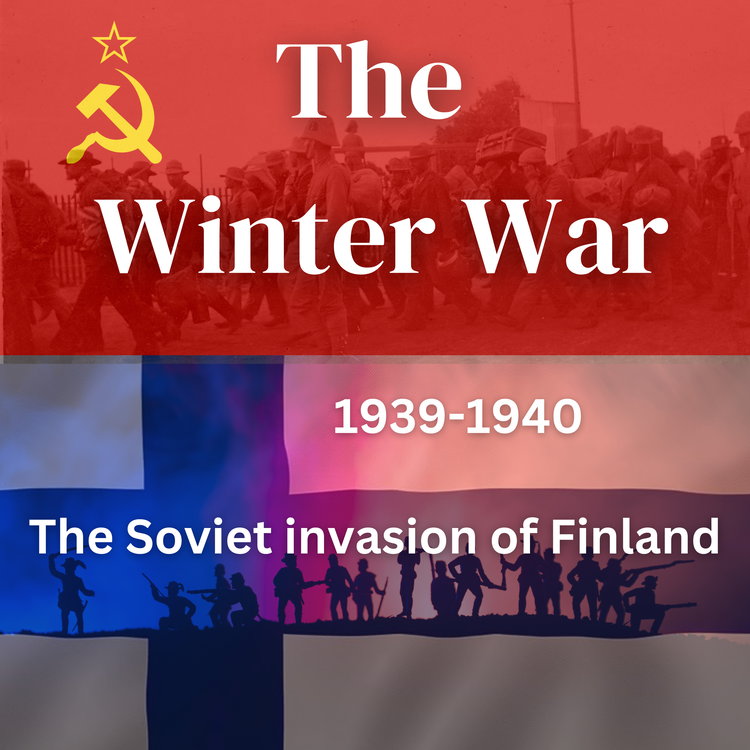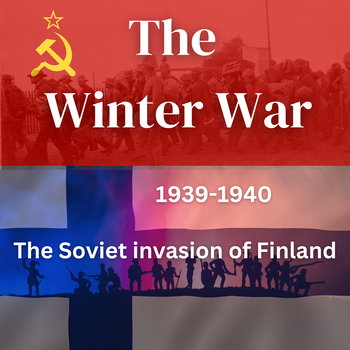
Episode 10 - Massive Russian bombardments on the Mannerheim Line as Moscow frets about oil
Loading player...
This is episode 10 and the Russians are about to launch their second attempt at invading Finland and this time, they’re going to significantly alter their strategy and their tactics.
The Stavka back in Moscow had inserted new commanders, demoted failures, and were now determined to recover lost initiative — the Red Army had lost numerous battles and lost face in the full view of the Germans.
This winter War lasted 105 days from November 1939 until March 1940, but its ramifications for world history cannot be overstressed. Hitler saw how the handful of Finns bludgeoned one of the world’s superpowers, crushed them in the early round of attacks, repulsed them repeatedly and in many ways, Finland’s treatment of the Russians reinforced the German Fascists mistaken belief that if they kicked in the USSR front door, the entire edifice of communism would collapse.
Thus the Reich’s own invasion of Russia which took place in 1941, operation Barbarossa.
While the Russian invasion of the far north of Finland had literally frozen to a halt, in the south around Lake Ladoga and further south, in the Karelian Isthmus, the Red Army had retrained and by early February 1940, was ready for the big push.
Lieutenant General Hugo Osterman directed the Finnish Army of the Isthmus. A quick revisit here - his army was split into two groups, in the West around Viipuri was Second Army Corps under lieutenant general Harald Ohquist, while the eastern half was held by Three Army Corps under Major General Heinrichs. The Taipale sector was inside Heinrichs zone of command, it had been fought over ferociously since the start of the Winter War. Factoring into Timoshenko’s thinking was somethign bloodthirsty. That the Finns could not afford to lose as many men as the Russians, he was going to try to bleed them white to quote a First world War logic — the battle of Verdun as case in point.
It was late in January 1940 when the Finns began to have an inkling of what was in store for them. They had a relatively weak Air force in terms of pure power, and the Russian Air Force bombed and strafed their positions almost at will. The Finnish Air Force tried to send recon flights over the Russian build up, but this was almost suicidal the anti-aircraft and other defences were so thick on the ground.
On the morning of February 1st a single Finn air reconnaissance aircraft managed to thread its way through these awaiting guns and zig zagged past Russian planes to make a hasty photo run over the forward Russian Positions in front Summa, which is now part of Russia and called Soldatskoye - roughly translated as Soldiers place. Summajarvi, the lake, is nearby and added a layer of complexity to the Russian advance — and shoehorned coming attacks into a specific area to the north of the lake.
The village of Summa was a gateway to the city of Viipuri. Meanwhile, Finlands political leadership was desperately trying to start peace talks behind the scenes. Foreign Minister Vaino Tanner had virtually setup camp in Stockholm where he held a series of meetings with Russia’s Swedish ambassador Alexandra Kollontai.
An unusual figure in this war, Alexandra as a woman was trying chiefly to stop Sweden from formally entering the war on Finlands’ behalf. But she was able to pass on messages to Stalin from Tanner.
The Stavka back in Moscow had inserted new commanders, demoted failures, and were now determined to recover lost initiative — the Red Army had lost numerous battles and lost face in the full view of the Germans.
This winter War lasted 105 days from November 1939 until March 1940, but its ramifications for world history cannot be overstressed. Hitler saw how the handful of Finns bludgeoned one of the world’s superpowers, crushed them in the early round of attacks, repulsed them repeatedly and in many ways, Finland’s treatment of the Russians reinforced the German Fascists mistaken belief that if they kicked in the USSR front door, the entire edifice of communism would collapse.
Thus the Reich’s own invasion of Russia which took place in 1941, operation Barbarossa.
While the Russian invasion of the far north of Finland had literally frozen to a halt, in the south around Lake Ladoga and further south, in the Karelian Isthmus, the Red Army had retrained and by early February 1940, was ready for the big push.
Lieutenant General Hugo Osterman directed the Finnish Army of the Isthmus. A quick revisit here - his army was split into two groups, in the West around Viipuri was Second Army Corps under lieutenant general Harald Ohquist, while the eastern half was held by Three Army Corps under Major General Heinrichs. The Taipale sector was inside Heinrichs zone of command, it had been fought over ferociously since the start of the Winter War. Factoring into Timoshenko’s thinking was somethign bloodthirsty. That the Finns could not afford to lose as many men as the Russians, he was going to try to bleed them white to quote a First world War logic — the battle of Verdun as case in point.
It was late in January 1940 when the Finns began to have an inkling of what was in store for them. They had a relatively weak Air force in terms of pure power, and the Russian Air Force bombed and strafed their positions almost at will. The Finnish Air Force tried to send recon flights over the Russian build up, but this was almost suicidal the anti-aircraft and other defences were so thick on the ground.
On the morning of February 1st a single Finn air reconnaissance aircraft managed to thread its way through these awaiting guns and zig zagged past Russian planes to make a hasty photo run over the forward Russian Positions in front Summa, which is now part of Russia and called Soldatskoye - roughly translated as Soldiers place. Summajarvi, the lake, is nearby and added a layer of complexity to the Russian advance — and shoehorned coming attacks into a specific area to the north of the lake.
The village of Summa was a gateway to the city of Viipuri. Meanwhile, Finlands political leadership was desperately trying to start peace talks behind the scenes. Foreign Minister Vaino Tanner had virtually setup camp in Stockholm where he held a series of meetings with Russia’s Swedish ambassador Alexandra Kollontai.
An unusual figure in this war, Alexandra as a woman was trying chiefly to stop Sweden from formally entering the war on Finlands’ behalf. But she was able to pass on messages to Stalin from Tanner.

